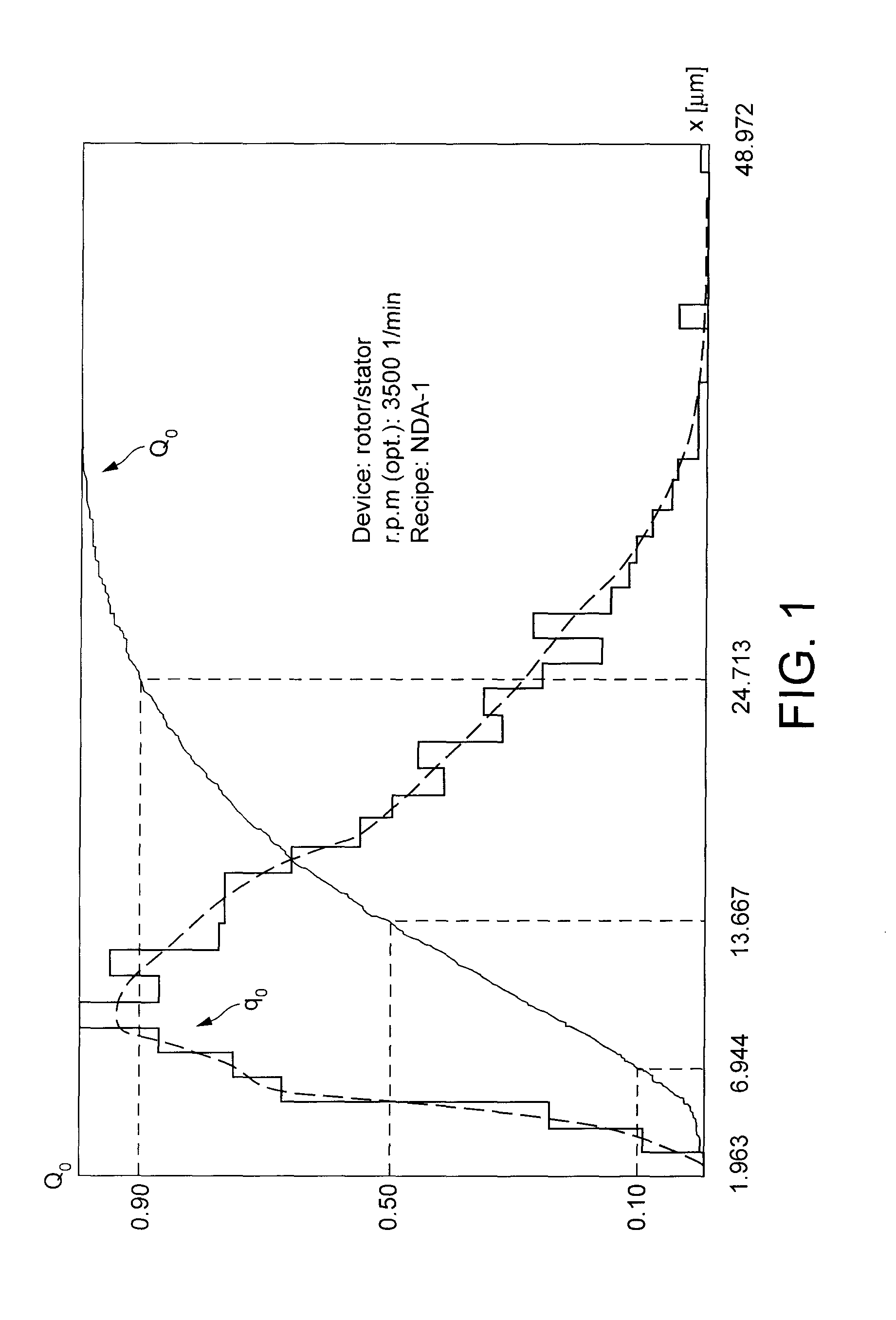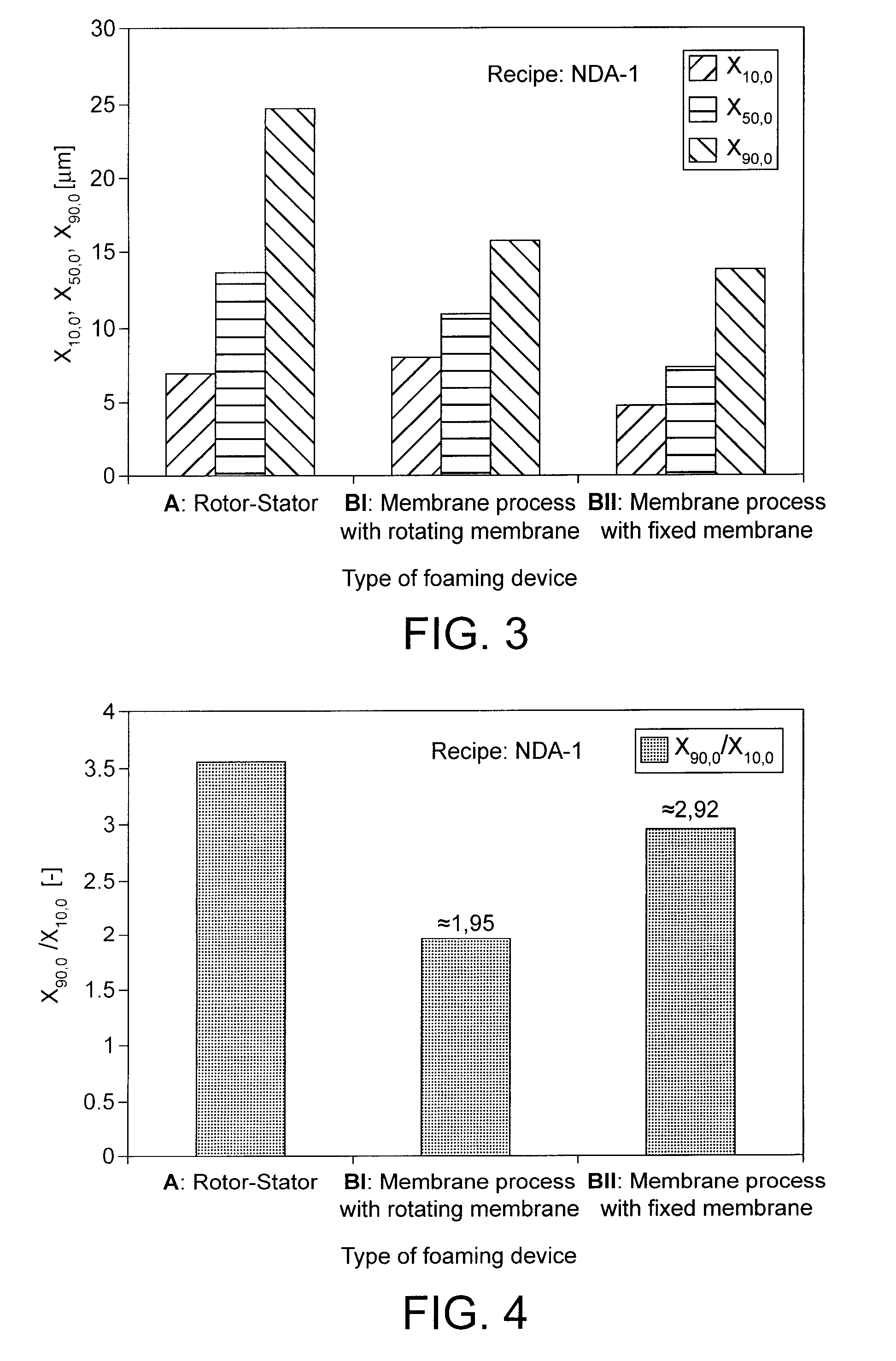Stable foam and process for its manufacture
a technology of stable foam and process, applied in the field of stable foam, can solve the problems of not meeting the needs of novel aeration techniques, not meeting the needs of stable foam, and not being able to manufacture related emulsions or dispersions, and achieve the effect of maintaining stable foam
- Summary
- Abstract
- Description
- Claims
- Application Information
AI Technical Summary
Benefits of technology
Problems solved by technology
Method used
Image
Examples
first embodiment
[0211]FIG. 12 shows a schematic diagram of the novel membrane process / device (Type B I) with the membrane mounted on rotating inner cylinder (Type I), in accordance with the invention. In FIG. 12, (1) denotes two double-sided slide ring sealings allowing to delivery of gas / air without leakage through the rotating hollow shaft (2). The gas / air enters the shaft at the gas / air inlet (3a) flows through the inner shaft channel (3b) and leaves the shaft again through holes (3c) into the hollow rotating cylinder (4), which at its surface holds the membrane (6). The gas / air is evenly distributed in the hollow cylinder (3d) and from there pressed through the membrane pores (3e) into the dispersing flow gap (7) forming bubbles at the membrane surface (8) or shooting as gas / air filaments (11) into the gap. The continuous liquid fluid phase enters the dispersing device at the fluid / mix inlet (5). As soon as the fluid / mix enters the dispersing gap (7) the dominating rotational flow component ove...
second embodiment
[0212]FIG. 13 shows additional information for the novel membrane process / device Type B II with the membrane mounted on the fixed housing (Type II), in accordance with the present apparatus. The shaft (2) and the connected cylinder (4) are no longer part of the aeration system. The membrane (6) is mounted onto a cage construction (18) connected to the inner surface of the cylindrical housing (17) and forming a gas / air chamber (19) between the inner housing wall and the membrane. Through a central gas / air inlet (13a) the chamber (19) is supplied with gas / air, which is evenly distributed (13b) and pressed through the membrane pores (13e) into the dispersing gap (7).
[0213]The continuous fluid flow and its impact on the dispersing procedure is expected to be similar to the type I version of the process described above (FIG. 12), except the different impact of the centrifugal forces which in this type II device support more gas phase shooting into the dispersing flow gap, forming prefera...
PUM
 Login to View More
Login to View More Abstract
Description
Claims
Application Information
 Login to View More
Login to View More - R&D
- Intellectual Property
- Life Sciences
- Materials
- Tech Scout
- Unparalleled Data Quality
- Higher Quality Content
- 60% Fewer Hallucinations
Browse by: Latest US Patents, China's latest patents, Technical Efficacy Thesaurus, Application Domain, Technology Topic, Popular Technical Reports.
© 2025 PatSnap. All rights reserved.Legal|Privacy policy|Modern Slavery Act Transparency Statement|Sitemap|About US| Contact US: help@patsnap.com



